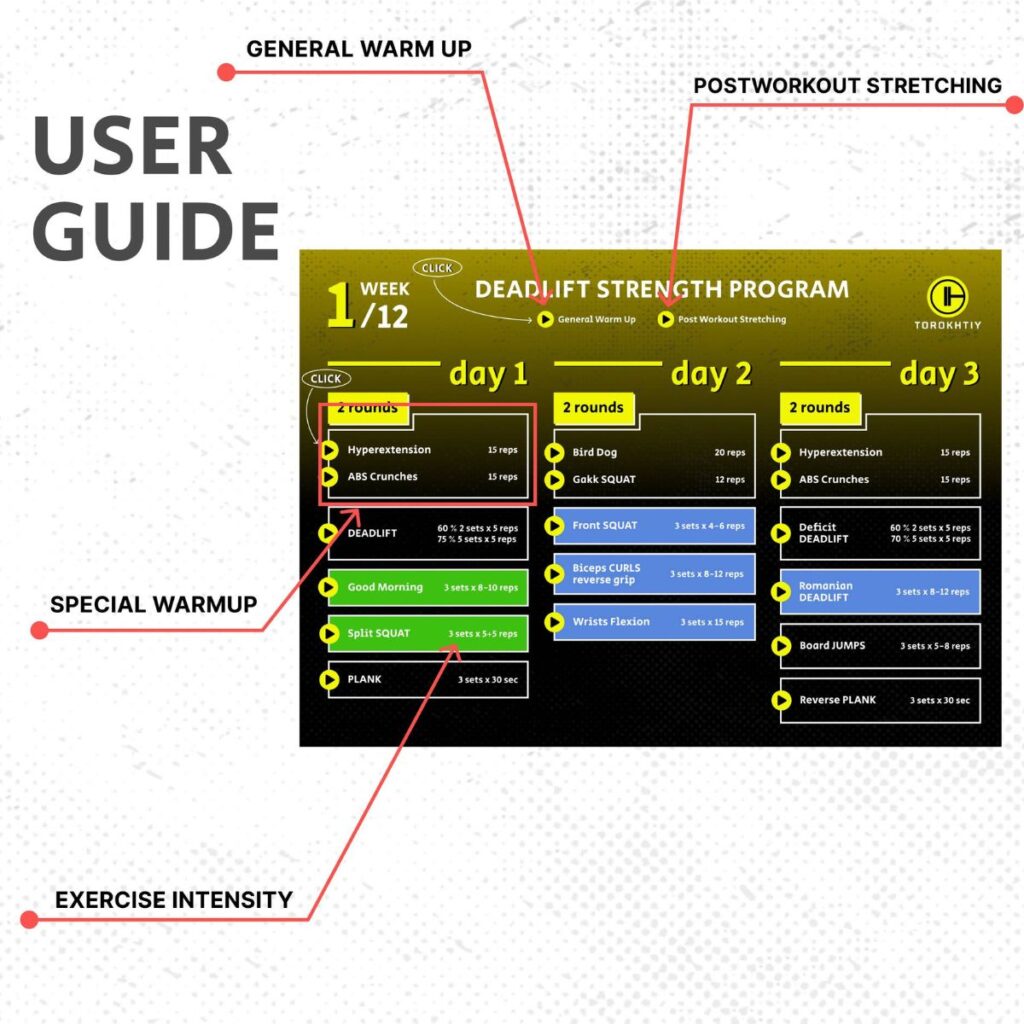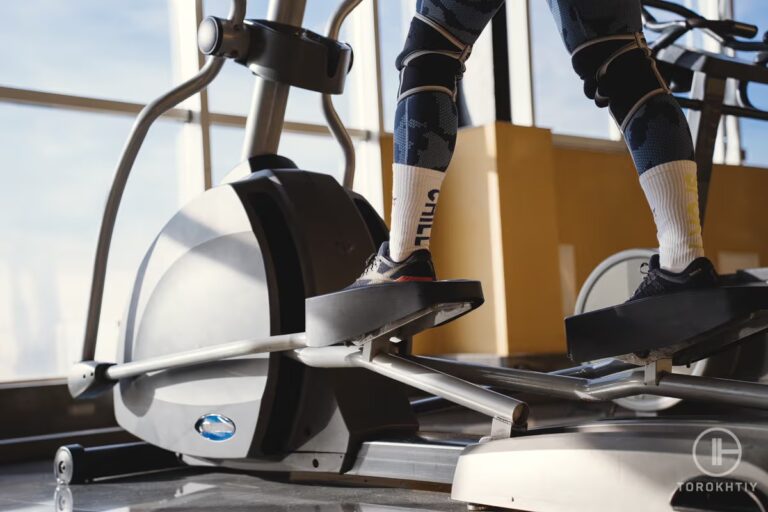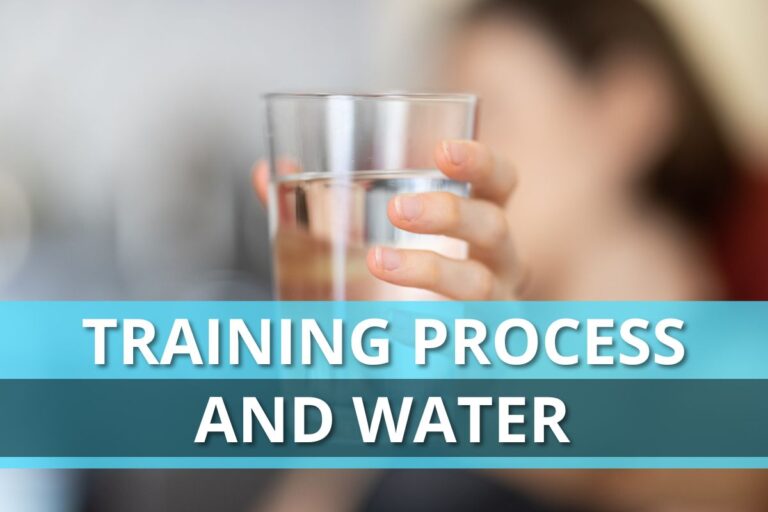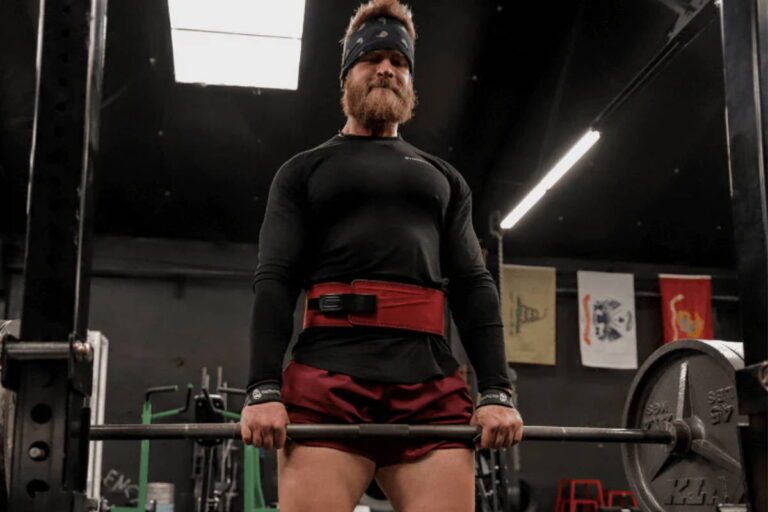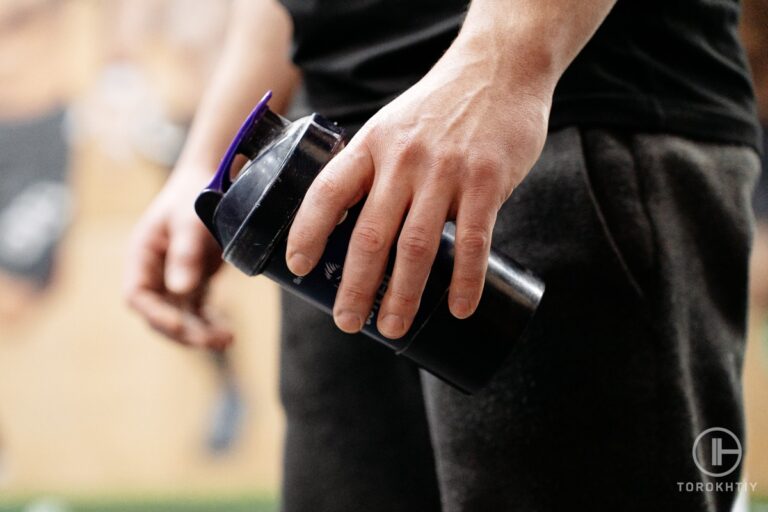How To Increase Your Deadlift: Tips, Drills & Program
Want to know how to increase deadlift performance?
Today we’re going to talk about deadlift progress and answer some common questions, such as why you might be stuck, what are some tips for deadlifting more, how to improve deadlift max capacity, and more.
Let’s start with a quick summary.
The answer to how to increase deadlift performance lies in proper training and consistency. Although genetics, athletic ability, and previous training experience play a role, proper technique, discipline, and a goal-oriented mindset guarantee increasing deadlift performance.
- Is It Realistic To Increase Your Deadlift?
- Why Can The Deadlift Be So Weak?
- The Main Factors That Affect The Increase In Deadlift Max
- The Best Exercises To Increase Deadlift
- Tips For Improving Deadlift
- Programming To Improve Your Deadlift
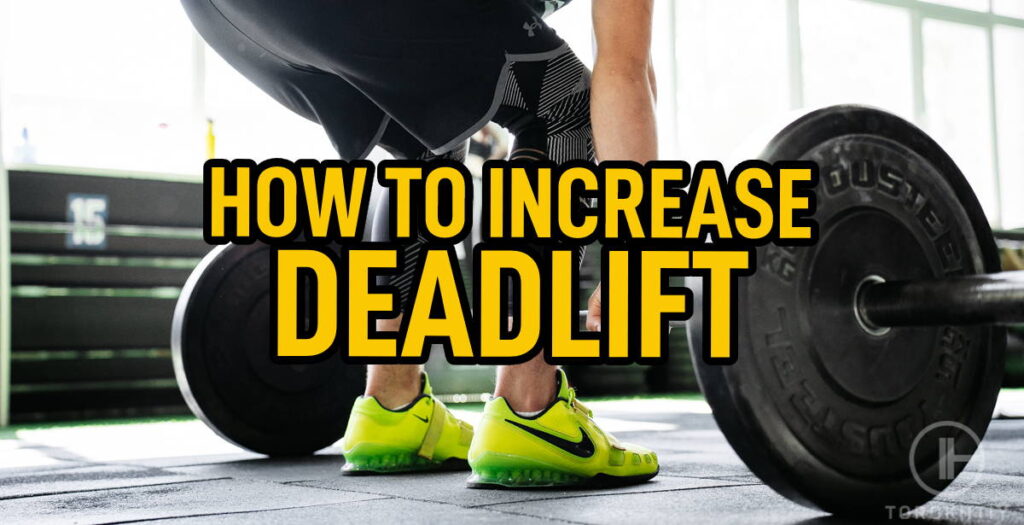
Is It Realistic To Increase Your Deadlift?
Absolutely, increasing your deadlift maximum is possible with proper training and consistency. That said, it’s important to note the rate of your improvement will vary depending on a few factors, such as your genetics, training experience, strength level, and dedication.
It’s generally true that novice athletes who are just starting with the Deadlift will see greater comparative weight progression in a shorter period (faster rate of weight increase) as they get more familiar with the exercise. For example, as your technique gets better, you may see quick jumps between your weight maximum. However, it’s also true that everybody hits a natural ceiling relative to their body composition eventually, after which progress may slow down and require more effort. Experienced athletes, especially those in competitive circuits, will know this feeling of maxing out well, but that doesn’t mean there’s no more room to improve.
Overall, while increasing your deadlift maximum may not be easy past a certain point, it is certainly possible with consistent effort and a well-designed training program.
Why Can The Deadlift Be So Weak?
If you feel like your Deadlift is too weak, there might be a few reasons why.
First, it may be due to improper exercise technique, which can tire you out more easily and limit your weight progression. Make sure you are using proper form when deadlifting, including maintaining a neutral spine, driving through your heels, and keeping the bar close to your body. Proper breathing is also important for deadlift power, and loss of breath is a common cause of exercise failure. Before attempting the lift, make sure you breathe into your diaphragm (stomach) and brace your core.
Second, depending on your training experience, it may be that you lack strength in related muscle groups. Deadlifts primarily target your gluteus, hamstrings, erector spinae, and quadriceps. They also require a good amount of grip and core strength. If you’re inexperienced in training these muscle groups, regardless of your overall physical strength, you may struggle with the deadlift. Consider incorporating exercises that target these muscle groups and body mechanics into your training program (more on this topic later in the article).
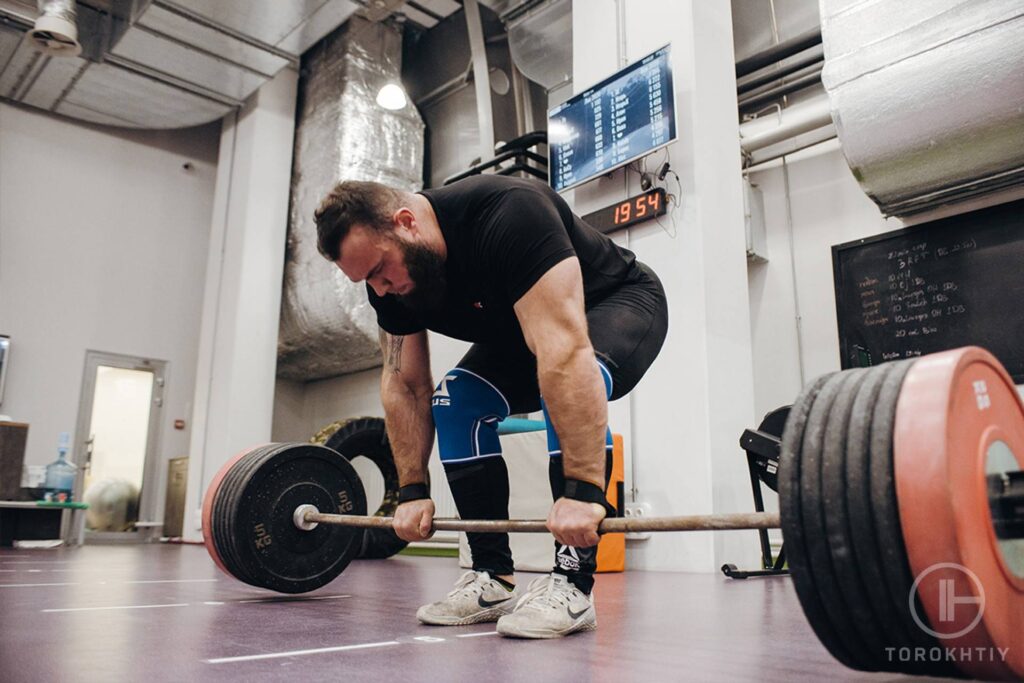
Third, you may not be training enough to progress. To get stronger, you need to consistently challenge your body with added training volume and intensity. If you’re inconsistent and don’t push your weight limit with progressive overload, you’ll be stuck in place or even regress.
Finally, we have to mention insufficient rest and recovery. Muscle fatigue is a real thing and overworking yourself is a common cause for it. No matter how strong you are, repeatedly activating the same muscle groups leads to their exhaustion. This is especially true for highly demanding exercises, such as the deadlift. Everybody’s different, but a good general rule is to take at least a day’s rest between training sessions, as well as intake a sufficient amount of food and water to replenish your energy resources.
The Main Factors That Affect The Increase In Deadlift Max
We’ve already touched upon the basic factors that impact your deadlift maximum. Apart from practicing proper technique, rounding up your deadlift with adequate supportive exercises, training consistency and intensity, and proper rest and recovery, here are some other factors to consider.
Genetic Makeup
Our genetics play a major role in our ability to develop athletic performance. One way that genetics can impact athletic performance is through muscle fiber composition. There are two main types of muscle fibers: slow-twitch (Type I) fibers, which are used for endurance activities such as long-distance running, and fast-twitch (Type II) fibers, which are used for explosive activities such as weightlifting. Naturally, people with higher proportions of fast-twitch fibers will have an inherent advantage in their ability to deadlift.
That said, although “better” genetics play a factor in our athletic capabilities, there’s been plenty of research on the topic in recent years, and findings overwhelmingly agree that hard work is equally as important as our biology.
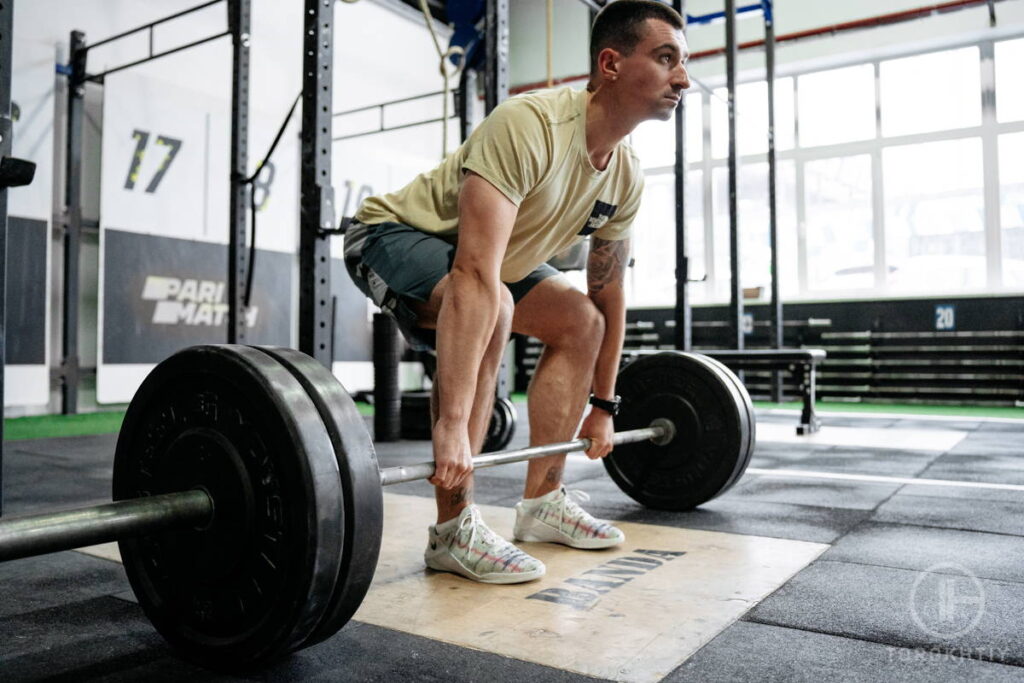
Athlete Size
Similar to genetics, an athlete’s natural size – for example, height, weight, and muscle percentage – play a factor in the athlete’s maximal deadlift. Conventional thinking leads us to believe that larger people are also stronger. On average, this statement is true, however, it’s a lot closer and more interesting than you might think.
Larger athletes will naturally be able to lift more, as their bodies can produce a larger amount of force (Newton’s second law of physics, also known as the Law of Force and Acceleration). Subsequently, they can expect greater amounts of weight progression in the beginning, at least in terms of raw numbers.
However, plenty of research on the topic of size VS athletic performance suggests that smaller athletes have a higher strength-to-weight ratio. For example, a study comparing male and female powerlifters found that, while larger lifters tended to lift more weight overall, the difference was relatively small and may not be considered statistically significant. This roughly means that, while larger athletes tend to outperform in terms of raw numbers, smaller athletes have the potential to outperform them on strength-to-weight scale and could be considered objectively stronger.
Previous Training Experience
Athletes with previous exercise experience, especially in the domain of strength training and weightlifting, will be able to deadlift more in the beginning. However, they will also hit their weight ceiling earlier than beginners.
On the other hand, beginner athletes can expect larger gains in muscle force and size than trained athletes. This phenomenon is popularly called “newbie gains” or “beginner gains” and has plenty of research to back it up.
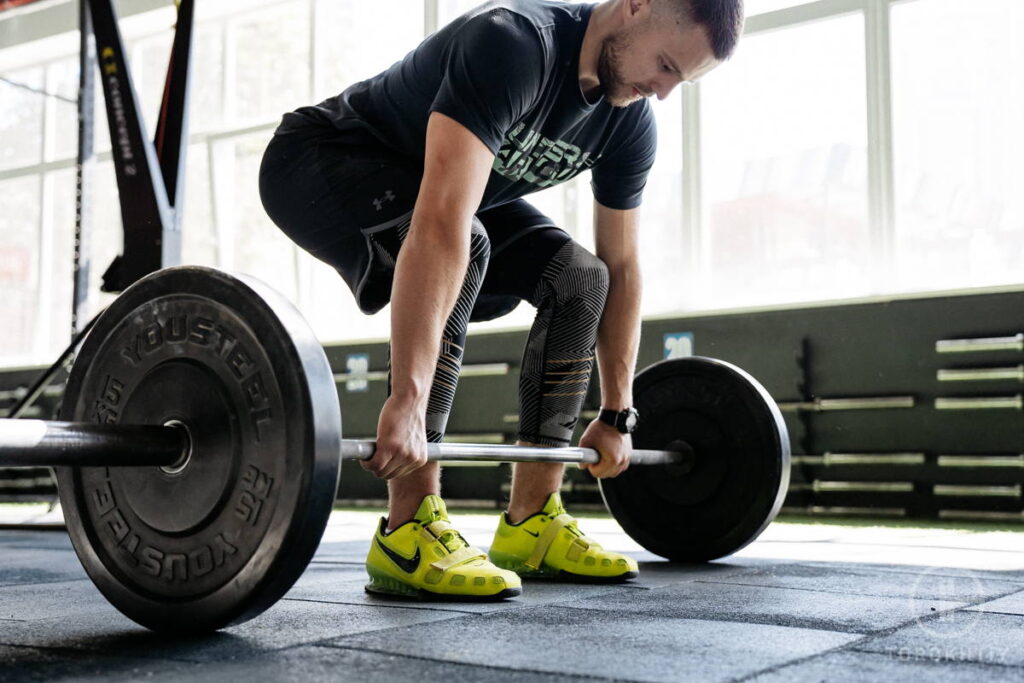
The Best Exercises To Increase Deadlift
The deadlift is a compound exercise that engages several muscle groups at once. If you’re looking for ways how to increase deadlift max capacity, incorporating supportive exercises into your routine is a good idea. Here are some example exercises as well as their beginner, intermediate, and advanced variations to fit your athletic level.
Squats
Squats are a compound exercise that target the quads, glutes, and core. They also improve your endurance, balance, and explosive power.
- Beginner – Bodyweight squat (without added weight resistance)
- Intermediate – Front squat with weight resistance
- Advanced – Barbell back squat
Lunges
Similar to squats, lunges also primarily target the lower body, including the quadriceps, hamstrings, glutes, and calves, and are excellent for core stability and balance
- Beginner – Bodyweight lunges (without added weight resistance)
- Intermediate – Weighted lunges (dumbbell, kettlebell, barbell)
- Advanced – Traveling lunges (same as weighted lunges but with forward or backward walking motion)
Glute Bridges
Glute bridges target the glutes, particularly the gluteus maximus, and can help improve hip drive during the deadlift.
- Beginner – Bodyweight Glute Bridge
- Intermediate – Single-leg Glute Bridge
- Advanced – Barbell Hip Thrust
Farmer’s Walks
Farmer’s Walks are an excellent supportive exercise for deadlifts as they work out your forearms and grip strength on top of building your endurance. The great thing about them is you can simply adjust their difficulty by using different weights.
- Beginner – Dumbbell Farmer’s Walks
- Intermediate – Kettlebell Farmer’s Walks
- Advanced – Trap Bar Farmer’s Walks
Pull-up Bar
If you want to know how to increase grip strength for deadlift performance, pull-up bar exercises are one of the best answers.
- Beginner – Hang
- Intermediate – Assisted pull-ups (with resistance bands or pull-up machine)
- Advanced – Pull-ups
Core Exercises
Your core plays a crucial part in bracing for deadlifts. Some efficient core exercises include:
- Beginner – Plank
- Intermediate – Bicycle kicks
- Advanced – Deadbugs
Back Extensions
Back extensions primarily target lower back muscles and help stabilize our spine.
- Beginner – Superman
- Intermediate – Back Extensions with bench
- Advanced – Weighted Back Extensions
Plyometric Box
Climbing a plyometric box can help develop lower body muscles, as well as explosive power. Here are some examples:
- Beginner – Step-ups
- Intermediate – Box Jumps
- Advanced – Squat Box Jumps (same as Box Jumps, but from squatted position)
Tips For Improving Deadlift
Use A Mixed Grip
One of the easiest tips on how to deadlift heavier that you can adopt immediately is using a mixed grip – one hand over, one hand under the barbell. Using a mixed grip during deadlifts has several benefits.
Firstly, it helps improve your grip on the barbell, as the double overhand grip tends to slip more. Second, a mixed grip can increase your maximum lift capacity, as the overhand grip provides gripping power, while the underhand grip allows for barbell control. Additionally, a mixed grip can help with injury prevention, and switching around your hand position can alleviate stress from your wrists and arm muscles. Finally, it’s important to switch up your mixed grip hands between sets to avoid fatigue and injury
Gear Up
If you’re serious about lifting and plan to do deadlifts as part of your regular workout routine, then it’s time to get proper weightlifting gear.
First, you’re going to need proper shoes for weightlifting. Using just any type of shoe, even if it’s meant for training, at the least may not provide ample support and comfort, and at worst is an injury risk.
Second, a pair of weightlifting gloves can make it more comfortable to grip the barbell, preventing damage to your palms, such as cuts, blisters, or calluses.
When you get to a more serious weight capacity (matching or exceeding your body weight), it’s time to invest in a weightlifting belt. Weightlifting belts, among other things, increase your intra-abdominal pressure, which stabilizes the spine during heavy lifts
Keep The Barbell Close
A small but important tip on how to get better at deadlift exercises is to pay attention to your barbell position. The bar should be as close to your body as possible during deadlifts. In fact, experienced athletes often have it close enough that it lightly brushes up or even grazes their shins.
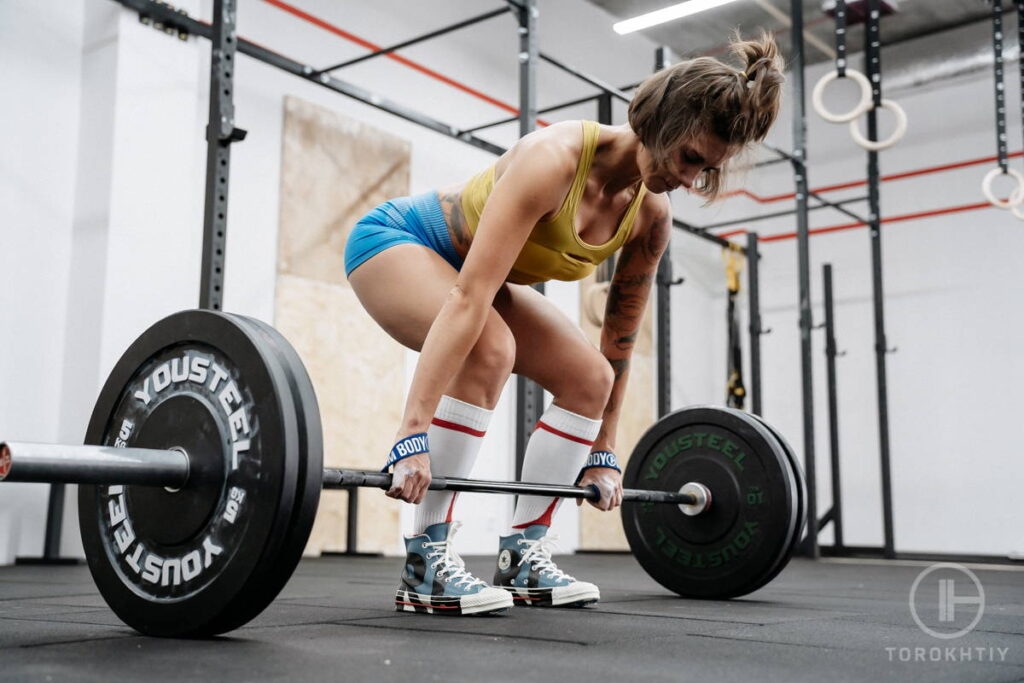
Programming To Improve Your Deadlift
Here are some examples of a weekly Deadlift program for different athletic levels using the above-mentioned exercises. Keep in mind that these are just examples and that you can tailor them to your liking or based on your trainer’s feedback. For example, if you find one exercise too easy and want a more advanced one, feel free to do so.
Beginner Program
Day 1:
- Deadlift 3 sets of 8 reps at 70% capacity
- Bodyweight squats 3-4 sets of 8-10 reps
- Bodyweight lunges 3-4 sets of 8-10 reps
- Plank 3 sets of 30 seconds
- Superman 3 sets of 15-20 reps
Day 2: Rest or active recovery
Day 3:
- Deadlift 3 sets of 8 reps with progressive overload
- Hanging 3 sets of 15-20 seconds (or to your max)
- Step-ups 8-10 reps per leg
- Bodyweight Glute Bridge 3 sets of 10-15 reps
- Dumbbell Farmer’s Walks 20-30 steps
Day 4: Rest or active recovery
Day 5:
- Deadlift 3-4 sets of single maximum repetition
- Plank 3 sets of 30 seconds
- Superman 3 sets of 15-20 reps
- Incorporate other exercises based on your performance needs
🔻12-Week Deadlift Strength Program by Oleksiy Torokhtiy
Unlock your true potential with our Deadlift Strength Program!
Designed for athletes by 2-time Olympian Oleksiy Torokhtiy, this 12-week program focuses on enhancing your deadlift strength, strengthening your back and legs.
Program details:
- 12 weeks;
- 3 days / week;
- 45-120 minutes per session;
- 50+ specific exercises;
- Focus on New Result in Deadlift;
- One-time payment, no recuring payments;
- Full access to all training content.
Start now and boost your deadlift results!
Intermediate Program
Day 1:
- Deadlift 3 sets of 8-10 reps at 70% capacity
- Front Squats 3-4 sets of 8-10 reps
- Weighted lunges 3-4 sets of 8-10 reps
- Bicycle kicks 3 sets of 20-30 reps
- Back Extensions 3 sets of 15-20 reps
Day 2: Rest or active recovery
Day 3:
- Deadlift 3 sets of 8-10 reps with progressive overload
- Assisted pull-ups 3 sets of 8-12 repetitions
- Box Jumps 3-4 sets of 5-10 reps
- Single-leg Glute Bridge 3 sets of 10-15 reps
- Kettlebell Farmer’s Walks 20-30 steps
Day 4: Rest or active recovery
Day 5:
- Deadlift 3-4 sets of single maximum repetition
- Bicycle kicks 3 sets of 20-30 reps
- Back Extensions 3 sets of 15-20 reps
- Incorporate other exercises based on your performance needs
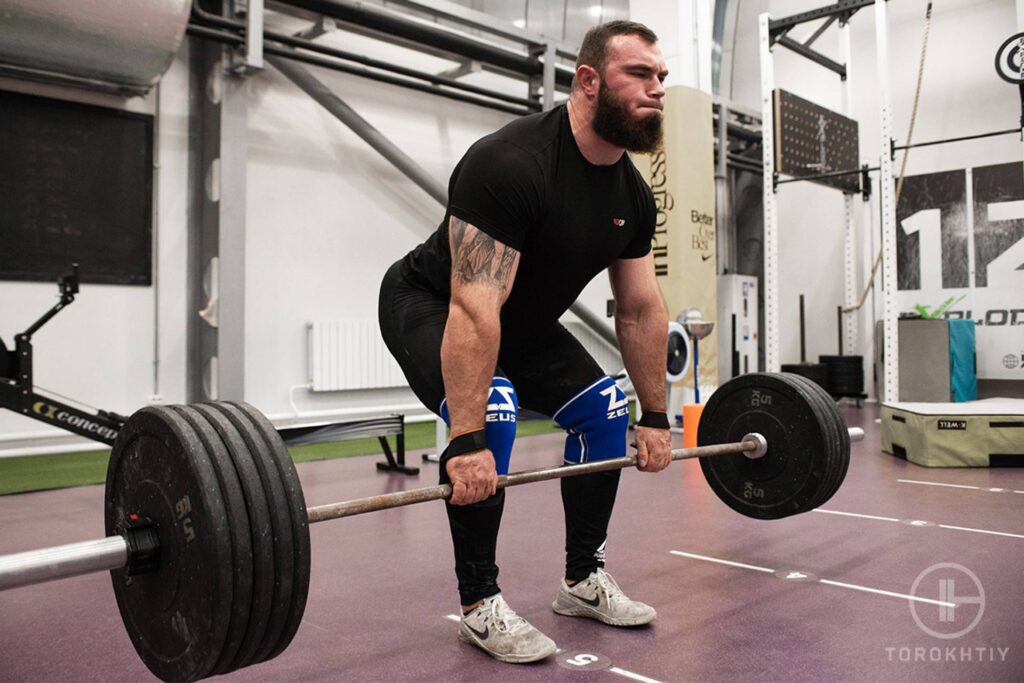
Advanced Program
Day 1:
- Deadlift 3 sets of 8-10 reps at 70% capacity
- Barbell Back Squats 3-4 sets of 8-10 reps
- Traveling lunges 3-4 sets of 8-10 reps
- Deadbugs 3 sets of 20-30 reps
- Weighted Back Extensions 3 sets of 15-20 reps
Day 2: Rest or active recovery
Day 3:
- Deadlift 3 sets of 8-10 reps with progressive overload
- Pull-ups 3 sets of 8-12 repetitions
- Squat box jumps 3-4 sets of 5-10 reps
- Barbell hip thrust 3 sets of 10-15 reps
- Trap Bar Farmer’s Walks 20-30 steps
Day 4: Rest or active recovery
Day 5:
- Deadlift single set of 8-10 reps just with barbell (warmup)
- Deadlift 3 sets of 3-4 reps with progressive overload (starting at 50-60% capacity up to 80-90%)
- Deadlift 2-3 sets of single maximum capacity repetition
- Incorporate other exercises based on your performance needs
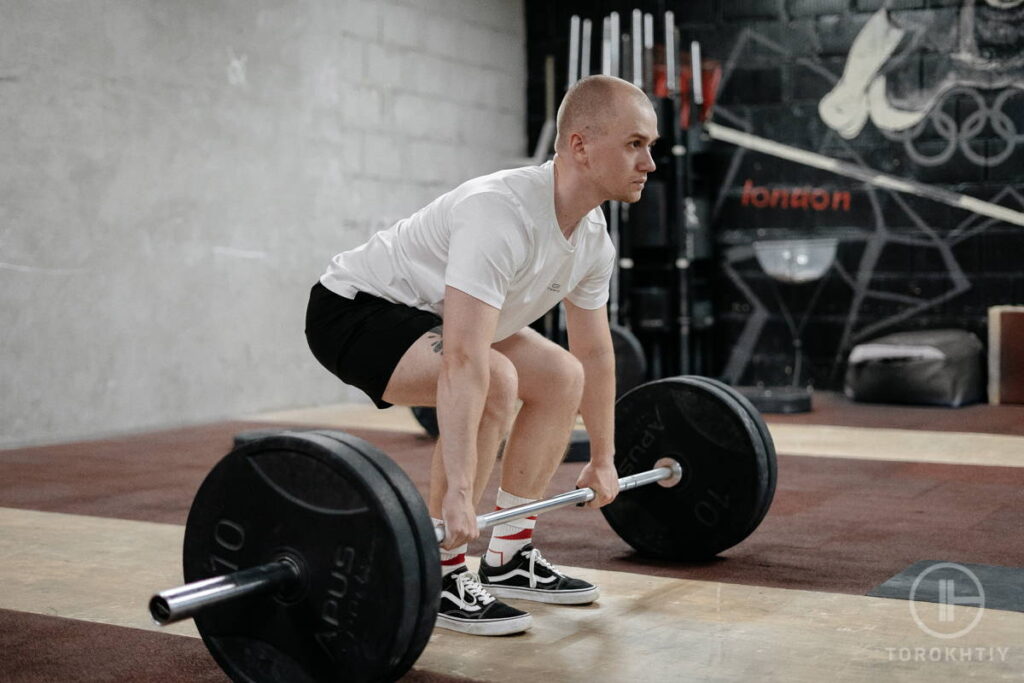
FAQ
Is Deadlift Easy To Increase?
While it’s not inherently hard to increase your deadlift maximum capacity, it does require a consistent effort to push past your limits. The deadlift is a complex and demanding exercise that requires a combination of strength, power, and technique, and losing training consistency can set you back in any of these factors. However, with a proper training program, you should see steady, quantifiable progress.
How Body Weight Affects How Quickly You Can Increase Your Deadlift?
Your body composition will impact how quickly you can improve your deadlift, as it will play a role in your natural strength level.
A heavier body weight can provide an advantage in the deadlift due to increased force production, leverage, and muscle mass. However, it can also lead to increased fatigue and stress on the body, which can impact how often and how much you can train.
Conversely, lighter body weight will have lower natural lifting potential at first, but may be able to recover more quickly between training sessions, leading to potentially faster progress over time.
Is 100 kg Deadlift Good?
A 100 kg Deadlift is generally considered good and is a realistic goal for the average adult athlete. However, other factors such as your own weight and lifting experience should also be considered. For example, for novice athletes who are just starting, lifting the equivalent of their body weight is also considered impressive and an initial goal to strive for.
On the other hand, athletes with over a year of experience who are serious about deadlift progress and practice it regularly should be lifting 1.5 to 2 times their body weight, depending on the number of reps. Meanwhile, competitive lifters should strive for up to 3 times their body weight for a single repetition (1 RPM) deadlift.
Conclusion
To improve deadlift maximum, incorporate exercises targeting related muscle groups, push weight limits with progressive overload, and take sufficient rest. Increasing deadlift max capacity past a certain point can be difficult, but it’s achievable if you’re patient and committed. That’s the end of our guide on how to increase deadlift performance.
Was there any information you found particularly helpful, interesting, or insightful? Are there any takeaways or tips you plan to use in your next deadlift session? Let us know by leaving the comments and remember to follow our social media pages for more valuable fitness content.
Also read:
- Deadlift Bar Weight
- Deadlift Progress
- Deadlifting 405
- Lower Back Pain When Deadlifting
- Are Deadlifts Good for Glutes
- Sumo Deadlift vs Conventional
- Rack Pull vs Deadlift
References:
- Muscle hypertrophy, hormonal adaptations and strength development // Springer: https://link.springer.com/article/10.1007/s00421-003-0833-3
- A Comparison between Male and Female Athletes in Relative Strength and Power Performances // NCBI: https://www.ncbi.nlm.nih.gov/pmc/articles/PMC7930971/
- Nature versus Nurture in Determining Athletic Ability // NCBI: https://pubmed.ncbi.nlm.nih.gov/27287074/
- Genes and Athletic Performance: An Update // NCBI: https://pubmed.ncbi.nlm.nih.gov/27287076/
- Muscle fatigue: general understanding and treatment // NCBI: https://www.ncbi.nlm.nih.gov/pmc/articles/PMC5668469/
- How to Do a Deadlift // Very Well Fit: https://www.verywellfit.com/how-to-do-the-deadlift-3498608
Why Trust Us?
With over 20 years in Olympic Weightlifting, our team does its best to provide the audience with ultimate support and meet the needs and requirements of advanced athletes and professional lifters, as well as people who strive to open new opportunities and develop their physical capabilities with us.
By trusting the recommendations of our certified experts in coaching, nutrition, dietology, and sports training programming, as well as scientific consultants, and physiotherapists, we provide you with thorough, well-considered, and scientifically proven content. All the information given in the articles concerning workout programming, separate exercises, and athletic performance, in general, is based on verified data. We ensure that you can rely on our professionals’ pieces of advice and recommendations that can be treated as personalized ones which will benefit you and fully meet your needs.
The product testing process is described in more detail here
Author: Sergii Putsov
Head of Sport Science, PhD
Best Results: Snatch – 165 kg,
C&J – 200 kg
Sergii Putsov, Ph.D., is a former professional weightlifter and National team member, achieving multiple medals in the 94 kg weight category at national competitions. With a Master’s degree in “Olympic & Professional Sport Training” and a Sport Science Ph.D. from the International Olympic Academy, Greece, Sergii now leads as the Head of Sport Science. He specializes in designing training programs, writing insightful blog articles, providing live commentary at international weightlifting events, and conducting educational seminars worldwide alongside Olympic weightlifting expert Oleksiy Torokhtiy.

